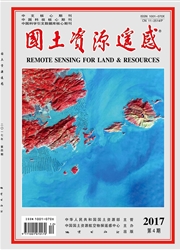

 中文摘要:
中文摘要:
针对无法直接获取训练样本的遥感影像分类问题,从满足条件的其他影像中选择替代训练样本是最直接的方法,但由于地物类型在不同影像中的辐射环境不同,导致替代训练样本对待分类影像的代表性较差,无法保证分类精度。以直推式支持向量机(transductivesupportvectormachine,TSVM)分类为例,发展了一种基于半监督学习的遥感影像训练样本时空拓展方法。该方法采用非监督方法从待分类影像中选择大量未标记样本,挖掘各类地物在特征空间中的结构信息;以替代训练样本所拟合的分类面为初始面,通过自适应渐进式的优化,实现对待分类影像的高精度分类。该方法要求训练样本的来源影像与待分类影像具有相似的地物分布和相近的时相。以SPOT5和QuickBird影像分类为例,分别通过基于像元的和基于分割对象的分类实验证实,该文提出的方法可有效地实现训练样本的时空拓展应用。
 英文摘要:
英文摘要:
In classification of remote sensing images without any training samples, the choice of training samples from other representative images might be the only direct way; nevertheless, due to the difference of radiometric environments, the classification training samples from one image could not be well representative of other images. It is known that labeled samples from one image may not be effective for classifying others with high accuracy. In view of the above problem, a novel semi - supervised transcductive support vector machine (TSVM) method is proposed. The authors first chose a large quantities of unlabeled samples from the images which need to be classified in an unsupervised way, then extracted the inherent construction information of different classes in the feature space. Next, with the help of semi - supervised learning theory, the authors trained a classifier which was pre - trained by the labeled samples from another image in a recursive way, and at last an optimized classifier was obtained. It should be noted that two images involved in the method must have familiar land covers and acquired times. Classification experiments of SPOT5 and QuickBird remote sensing images were undertaken by the authors, and the classification results prove that the method proposed in this paper can effectively realize the sample extending application in both time and spatial domain.
 同期刊论文项目
同期刊论文项目
 同项目期刊论文
同项目期刊论文
 Object-oriented high resolution remote sensed imagery classification with spatial data mining method
Object-oriented high resolution remote sensed imagery classification with spatial data mining method 期刊信息
期刊信息
